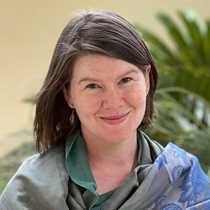Santa Cruz & North Seymour Islands
We dropped anchor at Academy Bay, located at the southeastern most side of Santa Cruz Island. At six-thirty in the morning we landed in Puerto Ayora, the largest settlement in the whole archipelago with approximately twelve thousand people living there. Here we took a bus to the highlands of Santa Cruz, where we started our search for the giant tortoises that had migrated already to their breeding reserve fields. This area is under the protection of the Galápagos National Park Service since 1959. The species that we found this morning are endemic to Santa Cruz, and they are one of the eleven subspecies that exist in the Galápagos. They also have a rather peculiar shape of the shell, reminding us of the dome shaped volcanoes, which are usually the places where they roam.
Unfortunately, these tortoises where once collected by whalers and buccaneers that found on them a good source of food. These amazing reptiles can survive without food and water for as long as one year!!
In the afternoon we visited the island of North Seymour, where a welcoming committee of Galápagos sea lions was waiting for us. This was just the beginning of a great experience. The amount of wildlife and the charming courtship displays of some of the species made this experience and unforgettable one. Blue-footed boobies were dancing and performing what we called the “sky pointing,” which is part of the courtship display. The male frigate birds had their red pouches inflated, trying to attract some of the females with their guttural calling.
We left behind North Seymour before the nightfall, but we were sure to admire the sunset, which was only an extra touch of beauty to add to this already amazing island.
We dropped anchor at Academy Bay, located at the southeastern most side of Santa Cruz Island. At six-thirty in the morning we landed in Puerto Ayora, the largest settlement in the whole archipelago with approximately twelve thousand people living there. Here we took a bus to the highlands of Santa Cruz, where we started our search for the giant tortoises that had migrated already to their breeding reserve fields. This area is under the protection of the Galápagos National Park Service since 1959. The species that we found this morning are endemic to Santa Cruz, and they are one of the eleven subspecies that exist in the Galápagos. They also have a rather peculiar shape of the shell, reminding us of the dome shaped volcanoes, which are usually the places where they roam.
Unfortunately, these tortoises where once collected by whalers and buccaneers that found on them a good source of food. These amazing reptiles can survive without food and water for as long as one year!!
In the afternoon we visited the island of North Seymour, where a welcoming committee of Galápagos sea lions was waiting for us. This was just the beginning of a great experience. The amount of wildlife and the charming courtship displays of some of the species made this experience and unforgettable one. Blue-footed boobies were dancing and performing what we called the “sky pointing,” which is part of the courtship display. The male frigate birds had their red pouches inflated, trying to attract some of the females with their guttural calling.
We left behind North Seymour before the nightfall, but we were sure to admire the sunset, which was only an extra touch of beauty to add to this already amazing island.




